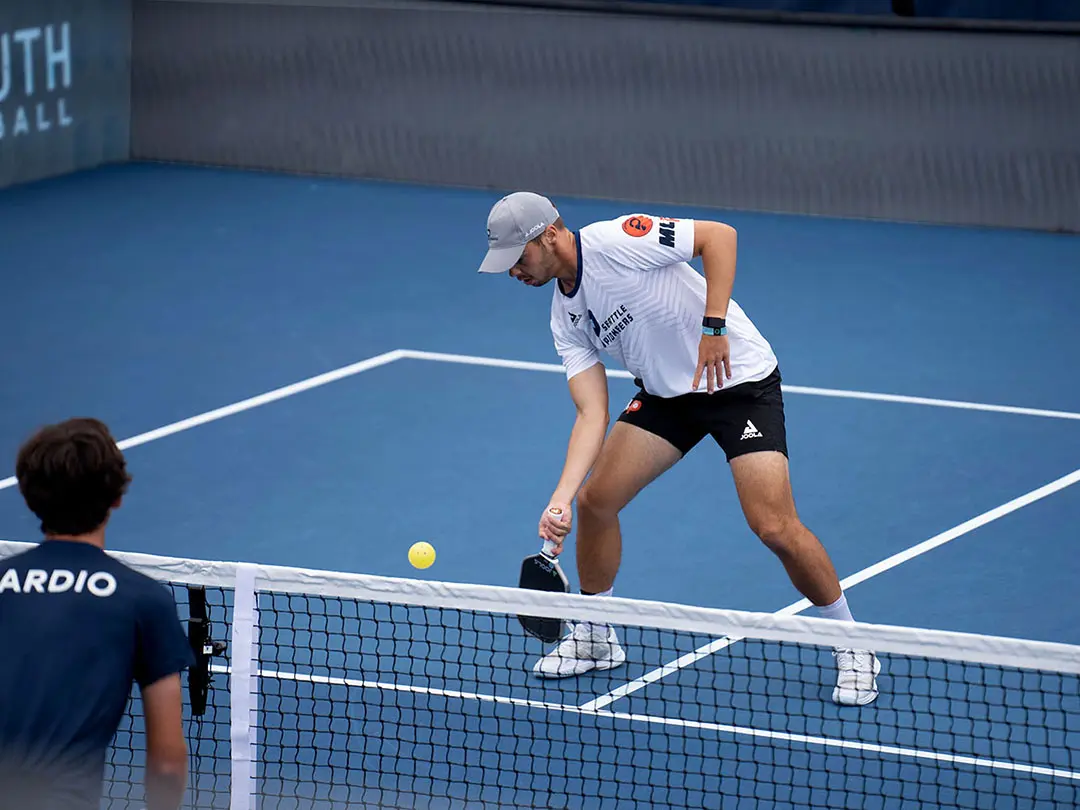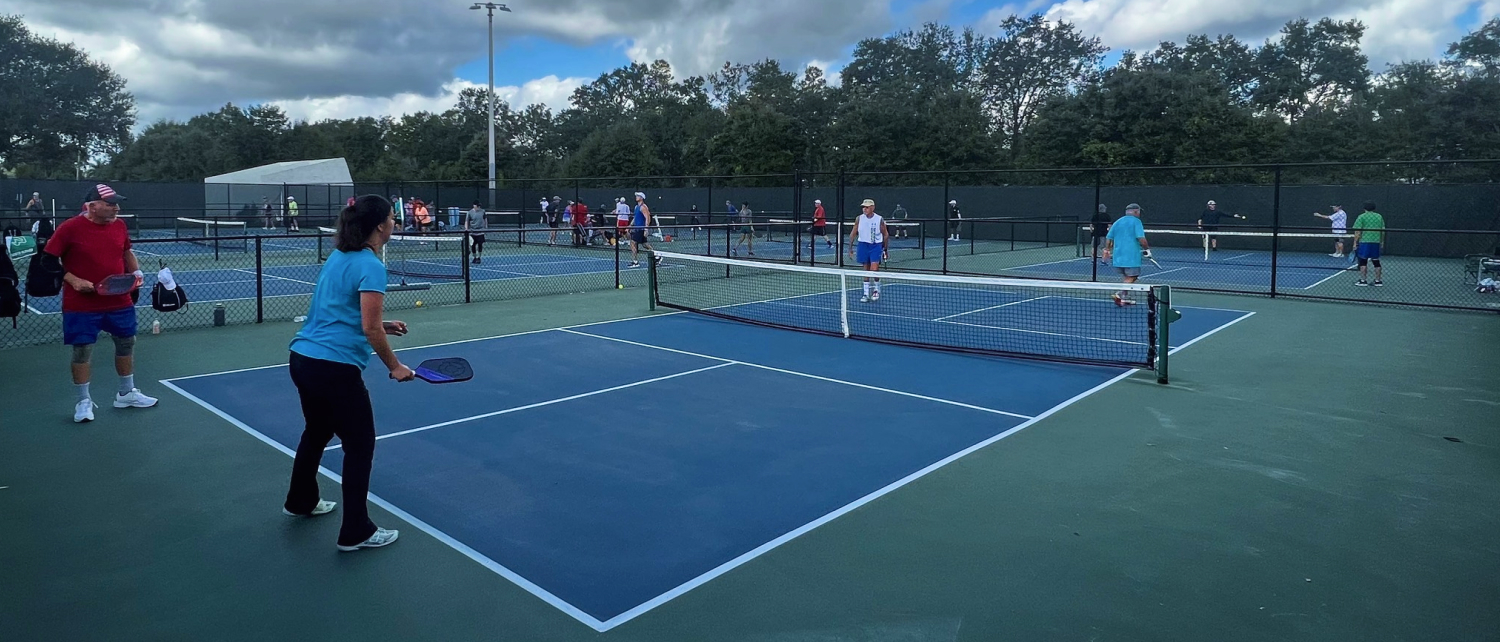Your cart is currently empty!

Pickleball’s meteoric rise in popularity stems from its accessibility, social appeal, and strategic depth, and no shot embodies the game’s finesse quite like the dink. For beginner pickleball players, mastering the dink, a soft, controlled shot typically played in the non-volley zone (NVZ) or “kitchen”, is a critical step toward becoming a competent and competitive player. This blog explores why dinking is so important, the essential techniques to learn it correctly, its role in advancing to higher skill levels, and additional benefits it brings to your game. We’ll also provide practical drilling recommendations to help you refine this foundational shot.
Why Dinking Matters in Pickleball
Dinking is often described as the heartbeat of pickleball strategy, particularly in doubles, which dominates recreational and competitive play. Unlike power shots like drives or smashes, dinks require precision, patience, and control, making them a cornerstone of the game’s “soft game.” This shot is used to place the ball just over the net into the opponent’s kitchen, forcing them to hit upward and limiting their ability to attack. For beginners, learning to dink effectively is crucial for several reasons:
- Neutralizes Aggressive Play: Dinking slows the pace of the game, preventing opponents from capitalizing on hard-hit shots. It allows beginners to stay in rallies longer, even against more experienced players.
- Builds Strategic Awareness: Dinking teaches players to think tactically, focusing on placement and patience rather than power. It’s the gateway to understanding court positioning and shot selection.
- Enhances Rally Control: A well-executed dink keeps the ball low, making it harder for opponents to attack. This control is vital for setting up offensive opportunities or forcing errors.
- Promotes Teamwork in Doubles: Dinking requires coordination with a partner, fostering communication and synchronized movement, which are essential for higher-level play.
For beginners, the dink is often one of the first shots introduced because it’s relatively easy to learn yet challenging to master. Getting it right from the start lays a solid foundation for long-term growth in pickleball.
Mastering Dinking Technique: Getting It Right from the Start
To dink effectively, beginners must focus on proper technique to avoid developing bad habits that are hard to unlearn. Here’s a breakdown of the key elements of a correct dink, with an emphasis on the critical role of follow-through:
- Ready Position and Return: Start in a ready position with knees slightly bent, feet shoulder-width apart, and weight on the balls of your feet. This athletic stance allows quick movement to the ball. Position yourself near the NVZ line, as most dinks occur in or near the kitchen. Keep your paddle up and in front of you, ready to meet the ball before it bounces. Anticipating the bounce ensures you’re prepared to make contact at the optimal moment.
- Paddle Positioning: Hold the paddle in front of your body, angled slightly upward to create the soft arc needed to clear the net. The paddle should be waiting for the ball, not swinging wildly. This controlled setup minimizes errors and maximizes precision.
- Non-Dominant Hand Position: Use your non-dominant hand to stabilize your body and enhance balance. Keep it relaxed, either resting near your side or lightly supporting your paddle arm. Avoid tensing or overusing the non-dominant hand, as it can disrupt your swing.
- No Elbow, No Wrist Involvement: A common mistake among beginners is flicking the wrist or bending the elbow excessively, which leads to inconsistent shots. Instead, keep your arm relaxed and use your shoulder to guide the paddle. The motion should feel like a gentle lift or push, with the paddle face doing the work.
- Relaxed Arm: Tension in the arm leads to jerky, uncontrolled shots. Stay loose, letting the paddle glide through the motion naturally. A relaxed arm promotes a smooth, repeatable stroke.
- Focus on the Ball at Contact: All attention should be on the ball during contact. Watch it hit the paddle to ensure accurate placement. Aim to make contact at the ball’s apex (its highest point after the bounce) to control the trajectory and keep the shot low over the net.
- Ball in Front at Apex: Position yourself so the ball is in front of your body when you strike it. Hitting at the apex allows you to control the ball’s height and direction, ensuring it lands softly in the opponent’s kitchen.
- Importance of Follow-Through: A proper follow-through is essential for consistent and controlled dinking. After contacting the ball, allow your paddle to continue its motion naturally in the direction of the shot, keeping it smooth and low. The follow-through ensures the ball maintains its intended trajectory and prevents abrupt stops that can cause the ball to pop up or lose accuracy. Think of guiding the ball gently toward its target, letting the paddle flow forward slightly rather than stopping immediately after contact. This fluid motion reinforces the soft touch needed for dinking and helps maintain balance for the next shot.
Mastering these technical elements, including a smooth follow-through, early ensures that your dinking is consistent, controlled, and effective. Poor technique, like wrist flicks, tense arms, or skipping the follow-through, can lead to pop-ups (high shots that opponents can smash) or shots that hit the net, costing you points.
Why Dinking Carries Over to Higher Skill Levels
Learning to dink correctly isn’t just about surviving as a beginner, it’s a critical stepping stone to advancing your game. Here’s why mastering the dink translates to success at higher skill levels:
- Foundation for Advanced Shots: The dink’s soft touch and controlled motion are the basis for other finesse shots, like drop shots and resets. These shots require the same principles of paddle control, relaxed mechanics, and precise placement, which you develop through dinking practice.
- Tactical Versatility: At higher levels, dinking becomes a strategic weapon. Skilled players use dinks to manipulate opponents’ positioning, create openings for attacks, or force errors. Beginners who learn to place dinks accurately (e.g., targeting the opponent’s backhand or feet) develop the tactical awareness needed for advanced play.
- Transition to the Soft Game: As you progress, the soft game, centered around dinking and patience, becomes critical in competitive matches. Mastering dinking early prepares you to handle long, strategic rallies where power alone isn’t enough.
- Error Reduction: Proper dinking technique, including a controlled follow-through, minimizes unforced errors, a hallmark of higher-level play. Consistent dinks keep you in control, reducing the likelihood of giving opponents easy opportunities to attack.
By internalizing the mechanics and mindset of dinking, beginners build a skill set that seamlessly carries over to more complex strategies, making them well-equipped to compete at 3.5, 4.0, or higher skill levels.
Additional Benefits of Mastering the Dink
Beyond technique and skill progression, dinking offers other advantages for beginners:
- Builds Confidence: Successfully executing a series of dinks in a rally boosts confidence, as it shows beginners they can compete without relying on power.
- Improves Patience: Dinking teaches players to stay calm and avoid rushing points, a critical mindset for consistent performance.
- Enhances Court Awareness: Practicing dinks helps beginners understand court geometry, such as angles and net clearance, which improves overall game sense.
- Reduces Physical Strain: Unlike power shots, dinking is low-impact, making it ideal for beginners, especially older players, to stay active without risking injury.
Drilling Recommendations for Dinking Mastery
To develop a reliable dink, consistent practice through targeted drills is essential. Here are some beginner-friendly drills to help you hone your dinking skills:
- Partner Dink Rally Drill (10-15 minutes):
- Stand across from a partner at the NVZ line on opposite sides of the net.
- Exchange dinks, aiming to keep the ball low and landing in the opponent’s kitchen.
- Focus on relaxed arm, paddle control, hitting at the apex, and a smooth follow-through.
- Goal: Sustain a rally of 10-20 consecutive dinks without errors.
- Crosscourt Dinking Drill (10 minutes):
- Position yourself and a partner diagonally across the net (e.g., one in the right kitchen, the other in the left).
- Dink crosscourt, targeting the opponent’s backhand or sideline.
- Emphasize footwork, paddle readiness, and follow-through.
- Goal: Improve placement and consistency over 5-10 rallies.
- Solo Wall Dink Drill (10 minutes):
- If you don’t have a partner, practice against a wall.
- Stand 7-10 feet from a wall and dink the ball softly, aiming for a low, controlled bounce.
- Focus on shoulder-driven motion, relaxed arm, and follow-through.
- Goal: Maintain a rhythm of 20-30 consecutive dinks.
- Target Practice Drill (15 minutes):
- Place targets (e.g., cones or chalk marks) in the opponent’s kitchen.
- With a partner feeding balls, dink to hit specific targets, varying placement (e.g., corners, center).
- Emphasize watching the ball, hitting at the apex, and following through.
- Goal: Hit 8 out of 10 shots on target.
- Dink-to-Reset Drill (10-15 minutes):
- Have a partner hit a slightly harder shot to your kitchen, simulating a defensive scenario.
- Practice resetting the rally with a soft dink, focusing on control, placement, and follow-through.
- Goal: Successfully reset 10 shots into the opponent’s kitchen.
Tips for Drilling:
- Practice 2-3 times per week, spending 30-45 minutes on dinking drills.
- Record yourself to check technique, ensuring no wrist or elbow overuse and a smooth follow-through.
- Play with players slightly better than you to challenge your precision and patience.
- Stay patient, dinking progress takes time but pays off in consistency.
Conclusion
Dinking is more than just a shot, it’s a fundamental skill that shapes a beginner’s pickleball journey. By mastering proper technique, including a relaxed arm, focus on the ball, hitting at the apex, and a smooth follow-through, beginners can build a strong foundation for consistent play. The dink’s importance extends beyond the beginner stage, serving as a gateway to advanced shots and strategies that define higher-level pickleball. Its benefits, improved control, strategic awareness, and confidence, make it a must-learn skill. Through dedicated drilling and practice, beginners can transform their dinking into a reliable weapon, setting the stage for long-term success and enjoyment in this dynamic sport. So grab your paddle, hit the court, and start dinking your way to pickleball mastery!
Picture Source: JOOLA Pickleball






